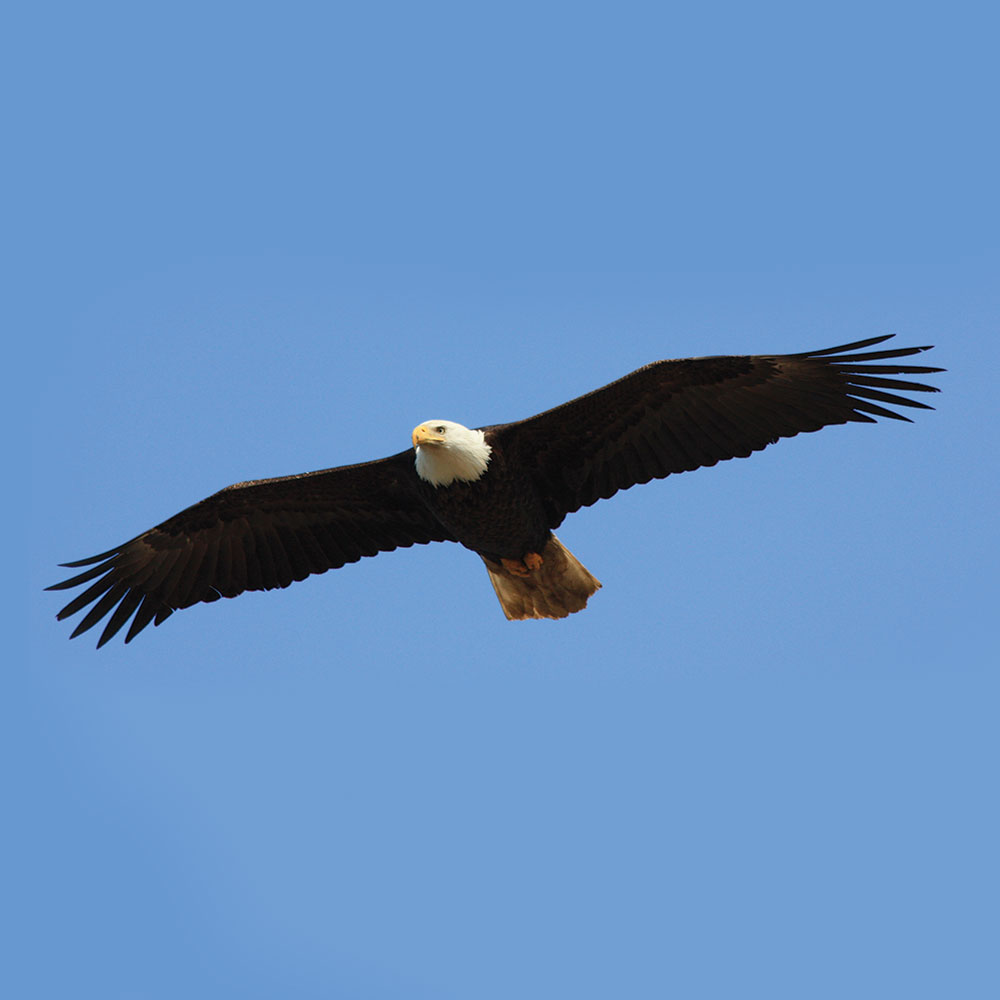Winter Eagles
The Great Outdoors | January 2, 2024

By Jackie Scharfenberg, Forest Naturalist, Wisconsin Department of Natural Resources
What’s a bald eagle (Haliaeetus leucocephalus) to do when the lakes freeze?
Pairs need to leave their warm-weather territories of forest bordered lakes, rivers, and marshes to head to places with open water. In Wisconsin that means congregating with many others along the Mississippi River or below dams on the Wisconsin and Fox rivers. Those spots also have nearby large trees for night-time roosting and prey spotting.
Diet
Fish, along with waterfowl and other birds, make up large part of our opportunistic carnivore diet. We also eat reptiles like turtles, smaller mammals, invertebrates (think…crabs), carrion, and even garbage. We aren’t fussy eaters and will grab a meal wherever we can, even on the roadside or in the field. Commonly, we practice kleptoparasitism – harassing other anglers like osprey, otters, and even humans in order to steal their catch of fish. At an animal carcass, we will bully away vultures, ravens, coyotes, bobcats, dogs, sometimes other eagles.
In lean times, we can gorge a huge amount of food that we store in our crops (a special sack in our throats) and digest it over several days. If times get super tough, we can fast for several days or even a week or more.
Where We Are Located
Today, you can find bald eagles throughout most of North America from Alaska to northern Mexico. In every Wisconsin county, bald eagles now breed. This wasn’t always the case. By the mid-1900s only 417 breeding pairs existed in the United States. Hunting, poisoning, trapping, and using pesticides like DDT caused our decline. With the DDT ban and protections from the Endangered Species Act, Migratory Bird Act, and the Bald and Golden Eagle Protection Act, our numbers have re-bounded to 316,000+ individuals including 71,400 breeding pairs.
Appearance
Adults have white heads and tails, chocolate brown bodies and wings, and bright yellow eyes, bills, legs, and feet. Juveniles possess mottled brown feathers and dark eyes, bills, feet, and legs. It takes juveniles about five years to get their adult plumage.
Hunting
We eagles may prefer to steal and bully for food, but we do possess some incredible adaptations that make us great predators. Our large broad wings allow us to soar more than 10,000 feet high in the sky and dive after prey (reaching speeds approaching 100 miles per hour). Our superb eyesight allows us to spy prey about a mile away. We usually glide low over the water or field and grab a fish or rabbit with our strong feet. We have a grip ten times stronger than a human’s. Spicuales line the bottom of each foot which helps us grip slippery fish. Our specialized back toe (hallux) talon pierces the vital areas of prey while the front three toes hold it immobile. When feeding, we hold our prey with one foot and tear it into bite-sized pieces with other. If we catch a fish too big to carry, we can “swim” it with our wings to shore before dining. While flying we can carry a fish nearly our same weight.
On a winter day, head to open water areas to look for us searching for our next meal.



